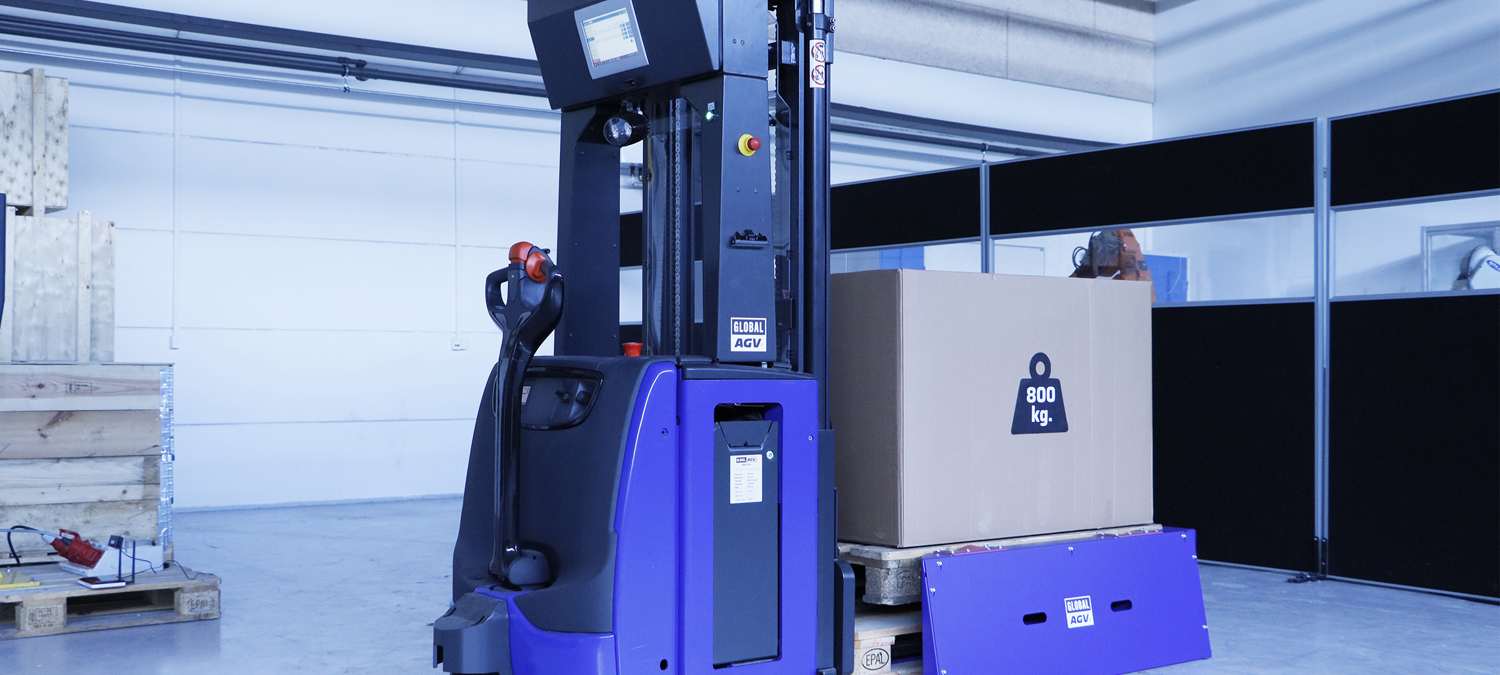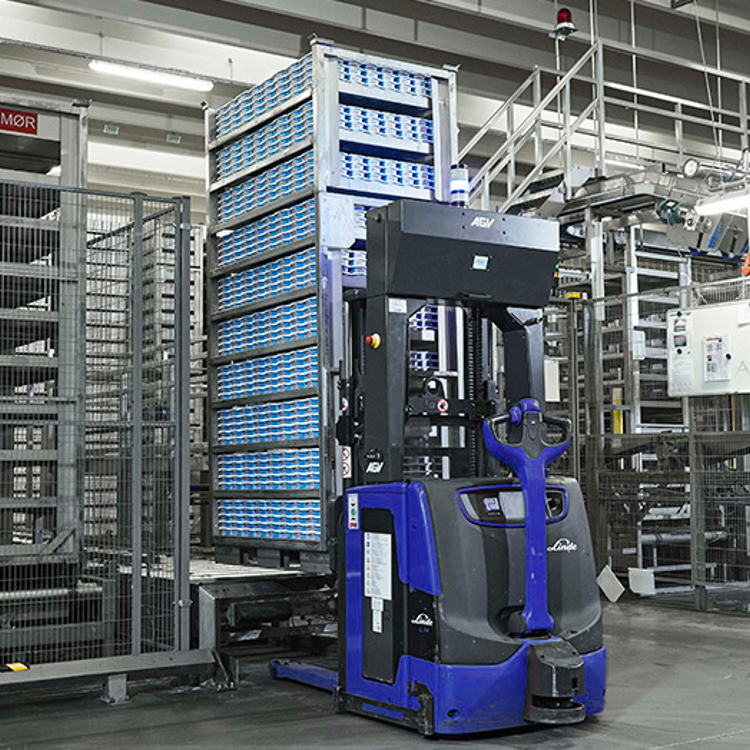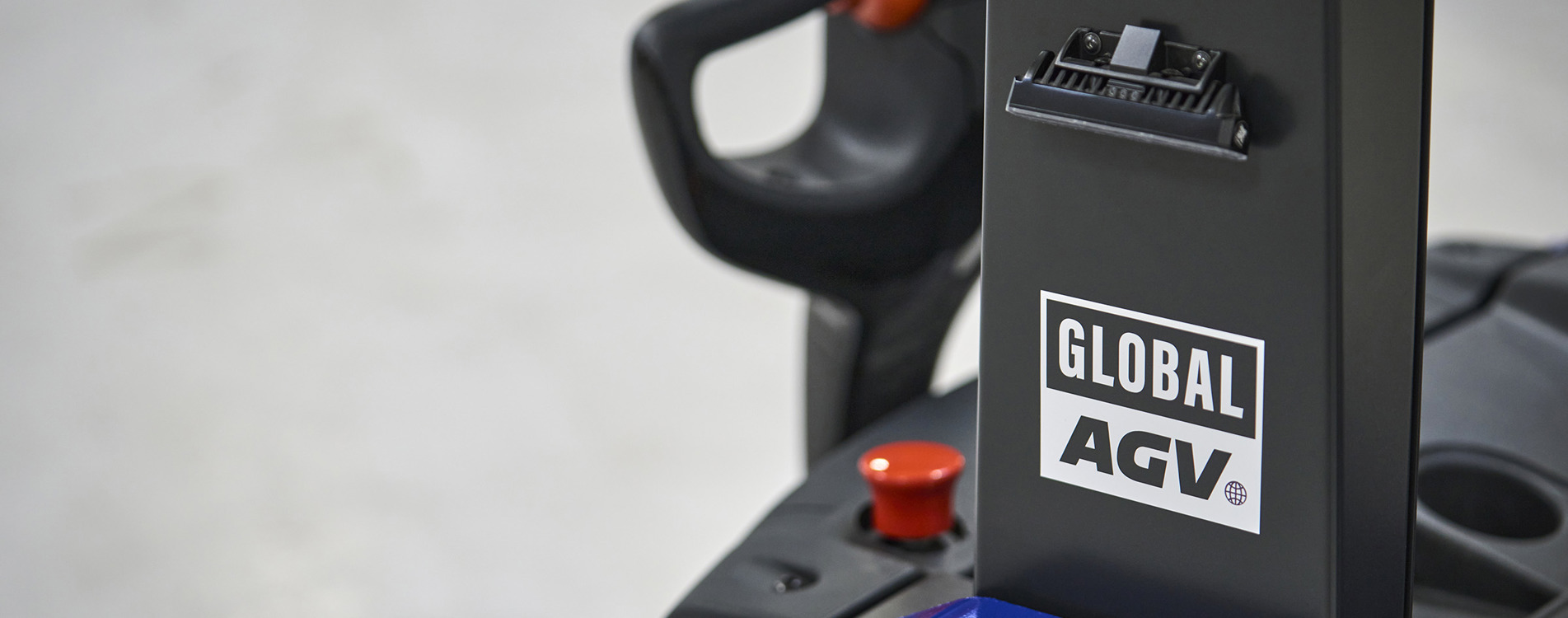The Price of an AGV: How to Calculate the Business Case of an AGV

Dive into the financial aspects of AGVs
Are you considering investing in an AGV? Are you curious about the financial aspects of the investment?
Then you've come to the right place.
In this article, we'll look at the different factors to consider, the hidden costs of manual truck driving, and how to calculate how long it might take for automated guided vehicles to pay for themselves.
This blog will unfold:

What does an AGV cost?

6 financial benefits of AGVs

Hidden costs of manual truck driving
What does an AGV cost?
Well, it depends.
A wide variety of factors impact the total price of your AGV.
Factors such as:
- your production needs,
- the complexity of the use case
- and the type of AGV you choose.
There's a big difference in the price of a small towing vehicle and a big, automated forklift truck – and there's a price range between $40.000 – $200.000 depending on the type of vehicle, the complexity of the tasks, number of vehicles, and software options.
Financial benefits of AGVs
Investing in AGVs can provide several financial benefits to your business and internal logistics.
Here are some of the key advantages:
- Labour cost savings: The most obvious benefit of implementing AGVs is reduced labour costs. You save money on wages, benefits and training by reassigning your employees to other, more value-adding tasks. Rather than training new truck drivers, AGVs enable you to make a one-time investment that can scale with your business. And our Global AGV is so simple that you can re-route and navigate it yourself.
- Increased productivity: AGVs operate efficiently and consistently without the limitations of human fatigue or errors. They can work around the clock, thereby increasing productivity and throughput, allowing businesses to handle more work in less time.
- Improved safety and reduced accidents: AGVs are designed with built-in safety features, such as sensors, cameras, and obstacle detection systems. These features help AGVs navigate safely in their environment, minimising the risk of accidents and collisions. By reducing workplace accidents, businesses can avoid costs associated with property damage, employee injuries, and potential legal liabilities.
- Scalability and adaptability: AGV systems are highly scalable, allowing businesses to expand their fleet as needed. They can be programmed and reprogrammed to adapt to changing production demands, layouts, or workflows. This flexibility enables companies to respond quickly to market fluctuations and operational requirements, maximising operational efficiency and cost-effectiveness.
- Reduced equipment and facility damage: AGVs are equipped with advanced navigation systems, which enable precise movement and positioning. By automating material transportation, AGVs minimise the risk of collisions with other equipment, racks, or infrastructure. This helps to reduce maintenance and repair costs associated with damaged equipment and facilities.
- Energy efficiency: AGVs are typically designed to be energy-efficient, utilising electric power sources. Compared to traditional forklifts or other material handling equipment that rely on fossil fuels, AGVs can help lower energy costs and contribute to a greener and more sustainable operation.
It's important to note that the financial benefits of investing in AGVs can vary depending on the specific business, industry, and operational context. Conducting a thorough cost-benefit analysis, considering factors such as initial investment, maintenance costs, expected productivity gains, and operational requirements, is essential in evaluating the potential return on investment for AGV implementation.

Collisions
Accidents can result in damage to goods, materials, and infrastructure, leading to costly repairs, replacements, and production downtime. Companies often incur expenses repairing damage caused by employee mishaps, like driving into buildings or pallet racks.
Damages
Improper handling of goods and materials can result in damage, leading to additional expenses for your business. This could be an expense to many new pallets yearly or having employees spend unnecessary time repairing pallets every week.
Accidents
Workplace accidents involving manual-driven forklift trucks can cause injuries, lost productivity, and legal liabilities. A US study found 87 annual deaths and an average of 95 serious injuries daily from truck collisions.
Equipment repairs
Ever had to manually do tasks like foil wrapping while waiting for equipment repairs? Damage incurred during manual operation may necessitate repairs or replacements, resulting in extra costs and potential production delays.
Calculating your return on investment
In our experience, most companies encounter a short payback period of less than a year.
With our Global AGV, you can achieve an average annual savings of 60% of your day-to-day operations compared to the annual costs associated with a driver-operated forklift. Expenses from labour costs, collisions, and damaged goods are minimised using the AGV's finely-tuned navigation and safety systems.

Interested in learning more about Global AGV?
Send us a message, and we'll look at the possibilities.
Or call us at +45 96 69 47 10.
Contact us
We are ready to answer all your
questions and discuss all the possibilities
of production optimisation in your company.


